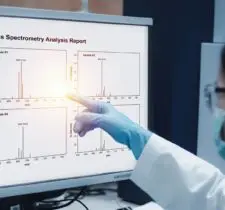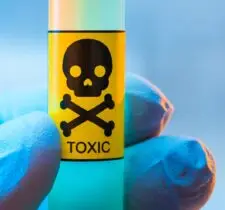Alcohol and drug-facilitated sexual assault (DFSA) is a deeply troubling issue that has significant implications for individuals and society. Over the last few decades, there has been an alarming increase in the number of complaints of sexual assaults when an individual is incapacitated and unable to consent. Often, these allegations have suggested that the accused surreptitiously spiked a drink of the victim. Other times, the allegation was that the victim was incapacitated due to voluntary consumption of alcohol with or without additional prescription, over-the-counter, or recreational drugs. Whether the drugs were ingested voluntarily or involuntarily, when an individual is impaired to such an extent that they are unable to understand the situation or incapable of consent, this is, by definition, drug-facilitated sexual assault.
This article focuses on the challenges associated with investigations into allegations of DFSA, toxicological evidence collection, and laboratory analysis of that evidence. It also includes recommendations to overcome some of these challenges.
Challenges with Drugs Used to Facilitate Sexual Assault
Perhaps the most substantial challenge with DFSA is the drugs involved in these crimes. Many of the substances found in these cases are low-dose central nervous system (CNS) depressants. The fact that they are “low-dose” means they are potent, requiring only small amounts to produce their pharmacological effect. The low doses also make it more difficult for laboratories to find these drugs, particularly when there is a delay in collecting samples for toxicological analysis.
The important pharmacological effect of CNS depression is that these drugs slow down the brain’s activity leading to impairment, anterograde amnesia, and unconsciousness. These pharmacodynamic effects can directly impact the victim’s ability to report the crime.
Another challenge is that numerous drugs can be used to commit DFSAs. While the media has focused on drugs such as Royhpnol (flunitrazepam) and gamma-hydroxybutyrate (GHB), one recent publication reported identifying over 100 different intoxicating substances in 1000 consecutive DFSA cases analyzed over about 16 months (see Fiorentin and Logan. Journal of Forensic and Legal Medicine, Volume 61, 2019). This work emphasizes the importance of comprehensive toxicological testing in DFSA cases and the risk of focusing only on drugs that have gained media attention.
With so many different drugs (or combinations of drugs) capable of causing some form of impairment, it is also important to recognize that there will be differences in how long proof of ingestion of these drugs is possible. For example, GHB may be detected in a urine sample for considerably less time than a drug like flunitrazepam. So when an investigation is unable to narrow the possible choices of drugs suspected in a given case, a negative toxicological finding can have two meanings – a) either a drug was not involved or b) a drug or drugs were used, but specimen collection occurred too late for the toxicology laboratory to provide evidence of the drug.
Challenges with Reporting DFSA
Because the drugs used in these cases often cause anterograde amnesia or complete unconsciousness, victims wake confused and uncertain as to what happened. The effects victims often describe are analogous to being under the effects of a general anesthetic.
If you have ever had a surgical procedure that required you to go under anesthesia, you can relate. You were probably in a pre-operative suite and asked to count backward from ten. It is not likely that you reached six. Your next memory was likely when you “woke” in a post-operative room with your surgery complete.
However, most surgical procedures are done with consent; the patient expects this loss of time. In contrast, imagine if you were out with friends and a similar loss of time happened. There would likely be a great deal of confusion on your part, and you would have many questions for your friends! And your first thought may not be that you had been a victim of a DFSA. Meanwhile, while you are likely to contact those with you and try to assemble the puzzle pieces, your body will continue to metabolize and excrete any drugs involved in causing these effects.
Another reporting challenge may be obtaining accurate information about the voluntary ingestion of drugs and alcohol by the victim. Sometimes this is caused by the victim’s fear of being blamed for putting themselves into a vulnerable position. Other times the victim may not even consider that his or her prescription or over-the-counter medication could be a contributing factor, so they do not think to mention them. A complete history of the amount of alcohol and other drugs ingested in the 24 hours before the alleged assault can aid toxicological investigations of DFSA.
Challenges with Specimen Collection from Alleged Victims of DFSA
As previously mentioned, delays in reporting suspected DFSAs are common because of these drugs’ effects on memory. Specimens for toxicological testing are not typically collected until the victim is examined by a medical professional, such as a Sexual Assault Nurse Examiner (SANE) or Forensic Nurse Examiner (FNE).
And because of these delays, blood samples may no longer have the involved drugs at detectable concentrations. Therefore, urine is often cited as the most useful specimen for toxicological testing; particularly when collection occurs within 120 hours after the alleged sexual assault. When reporting occurs later than that, hair may prove beneficial, although testing this specimen for a single exposure to a given drug may present additional analytical challenges for most forensic toxicology laboratories.
Challenges with the Toxicological Analysis of Evidence from Alleged Victims of DFSA
Toxicology laboratories can also contribute to the challenge of DFSA investigations. If you think about it, the primary mission of most toxicology laboratories is not to find one-time, low doses of drugs that were ingested days or even weeks before the specimens were collected. For example, clinical toxicology laboratories help diagnose patient symptoms, such as when a person is unconscious or acting strangely while in the Emergency Department. Toxicology laboratories within state crime laboratories often focus on samples collected from drivers suspected of being impaired. Those samples are typically collected shortly after the traffic stop. Postmortem toxicology tries to detect drugs that may have contributed to a person’s death. None of these scenarios are akin to trying to figure out if someone may have had a one-time exposure to an incapacitating, low-dose substance days or weeks before the toxicology samples were
collected.
So to successfully test samples collected from alleged victims of DFSA, toxicology laboratories often need:
- to improve the sensitivity of their analytical methods,
- have a keen awareness of the limitations of the testing that they can perform; and
- contract with external laboratories when they cannot detect these important drugs at such low concentrations.
Overcoming Some of the Investigative Challenges of DFSA
While each DFSA investigation has unique aspects that need to be considered, there are commonalities in most cases that allow for some general recommendations that may improve the chance for a successful investigation (also see Guidelines for the Forensic Analysis of Drugs Facilitating Sexual Assault and Other Criminal Acts).
Regarding the drugs used in DFSA, it is important to keep in mind the vast number of substances that can be used to commit this crime. Search warrants should consider every drug that an alleged perpetrator has access to as a potentially incapacitating substance until an expert with pharmacology or toxicology training dismisses its likely use. Likewise, medical personnel need to get a complete history of all drugs (e.g., recreational, prescription, and over-the-counter) and the amount of alcohol that a victim may have consumed in the 24 hours before the reported assault.
When it comes to reporting suspected DFSAs, timing is incredibly important. The sooner the suspicions are reported, the faster specimens can be collected, and the chances of finding evidence of any drugs contributing to the reported symptoms are improved.
It is also important to understand that individuals who have amnesia caused by the CNS depressant effects of these drugs may remember more details as time goes on. Memories may be stored but require assistance for the victim to retrieve them. For example, a song may come on the radio that happens to be the same song playing in the background when the assault occurred. Hearing that song, even weeks or months later, may trigger the victim’s memory of a part of the event that they otherwise could not recall. Additionally, some drugs used to facilitate sexual assaults can have hallucinatory effects, so the victim’s account of their perception of the events may appear strange.
The most useful specimens to analyze from victims of alleged DFSA will depend on the collection time (see Society of Forensic Toxicologists – Drug Facilitated Crimes Committee Fact Sheet). If specimens can be collected within the first 24 hours after the assault, at least 10 milliliters of blood should be collected in a tube that contains the preservatives sodium fluoride and potassium oxalate. A urine specimen should also be collected in the first 24 hours after the assault. If possible, 100 milliliters of urine are useful to ensure complete, sensitive testing can be performed. If specimens cannot be collected until after the first 24 hours but before 120 hours after the alleged assault, only urine is needed.
After 120 hours, hair is likely the only useful biological specimen to provide evidence of drug exposure. Generally, the hair should not be collected until a month or longer after the assault. A bundle of hair on the crown of the head about the diameter of a pencil should be secured with rubber bands, aluminum foil, or twist ties before cutting as close to the skin as possible. Noting the cut end of the hair bundle is also important.
Finally, if you have a choice in laboratories to use for the toxicological analysis, ensure they are capable of sensitive testing for these drugs. An American national standard of practice defines the required scope and sensitivity of testing performed on urine specimens in DFSA investigations (see ANSI ASB Std 121 – DFSA). A laboratory unable to meet these consensus-driven testing limits may miss evidence of drugs present in these samples.
Conclusions
DFSA investigations present many challenges because of the vast number of drugs that can be used, the effects that these drugs have on memory and consciousness, how those effects impact prompt reporting and specimen collection, and how delays in collection impact a laboratory’s ability to provide evidence of drug involvement. The recommendations presented can help ensure a thorough investigation into DFSA allegations is undertaken.






